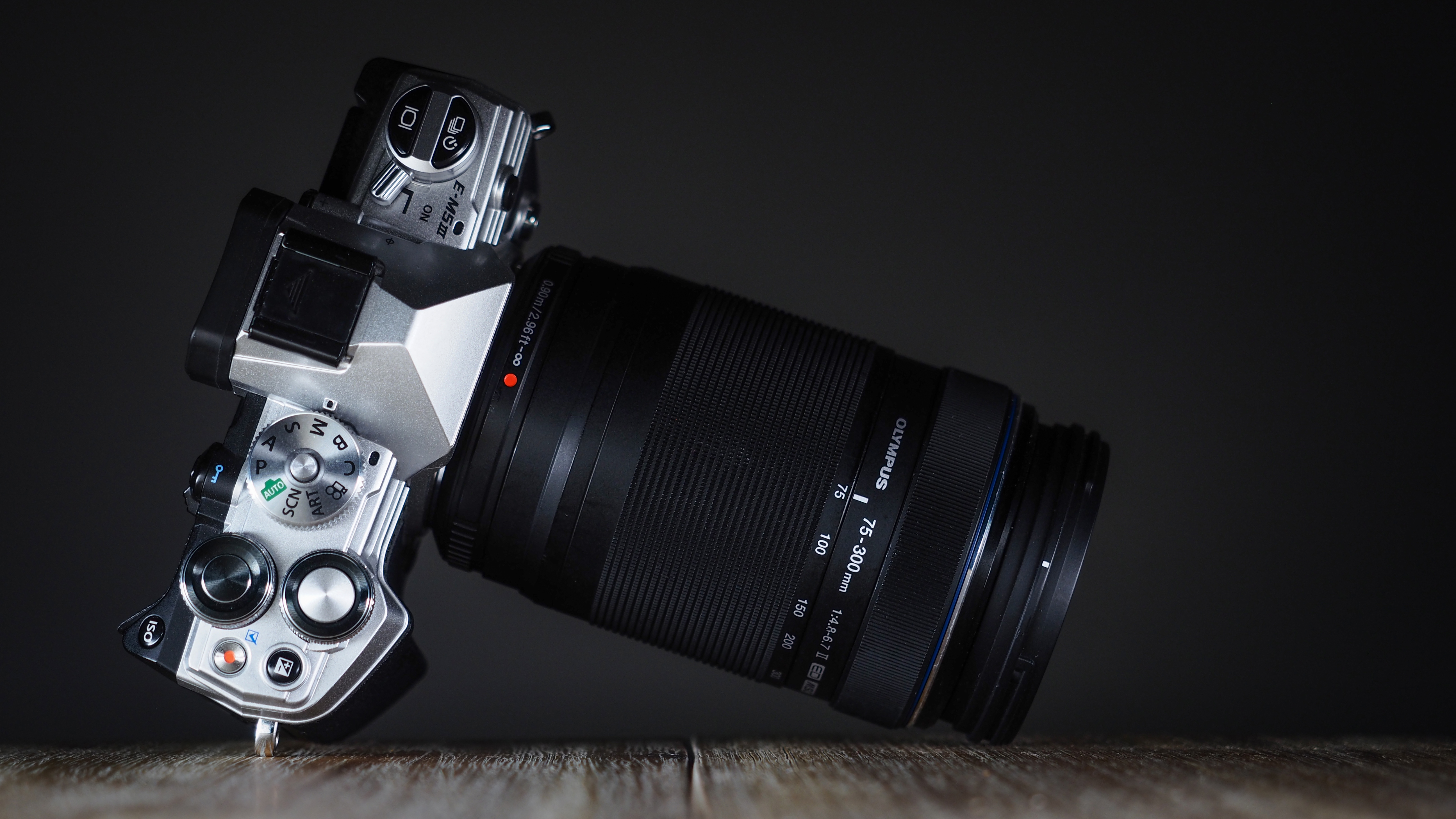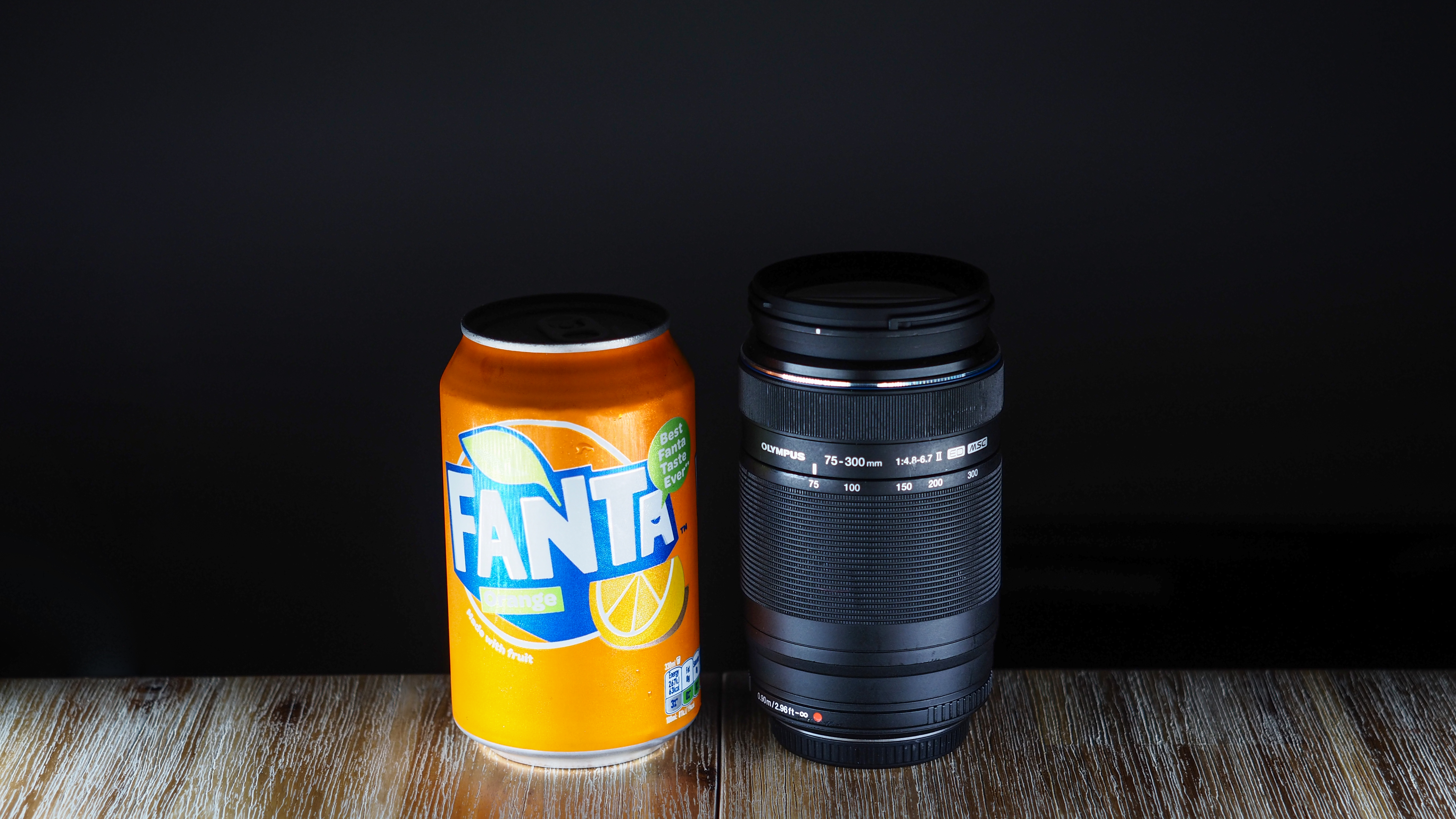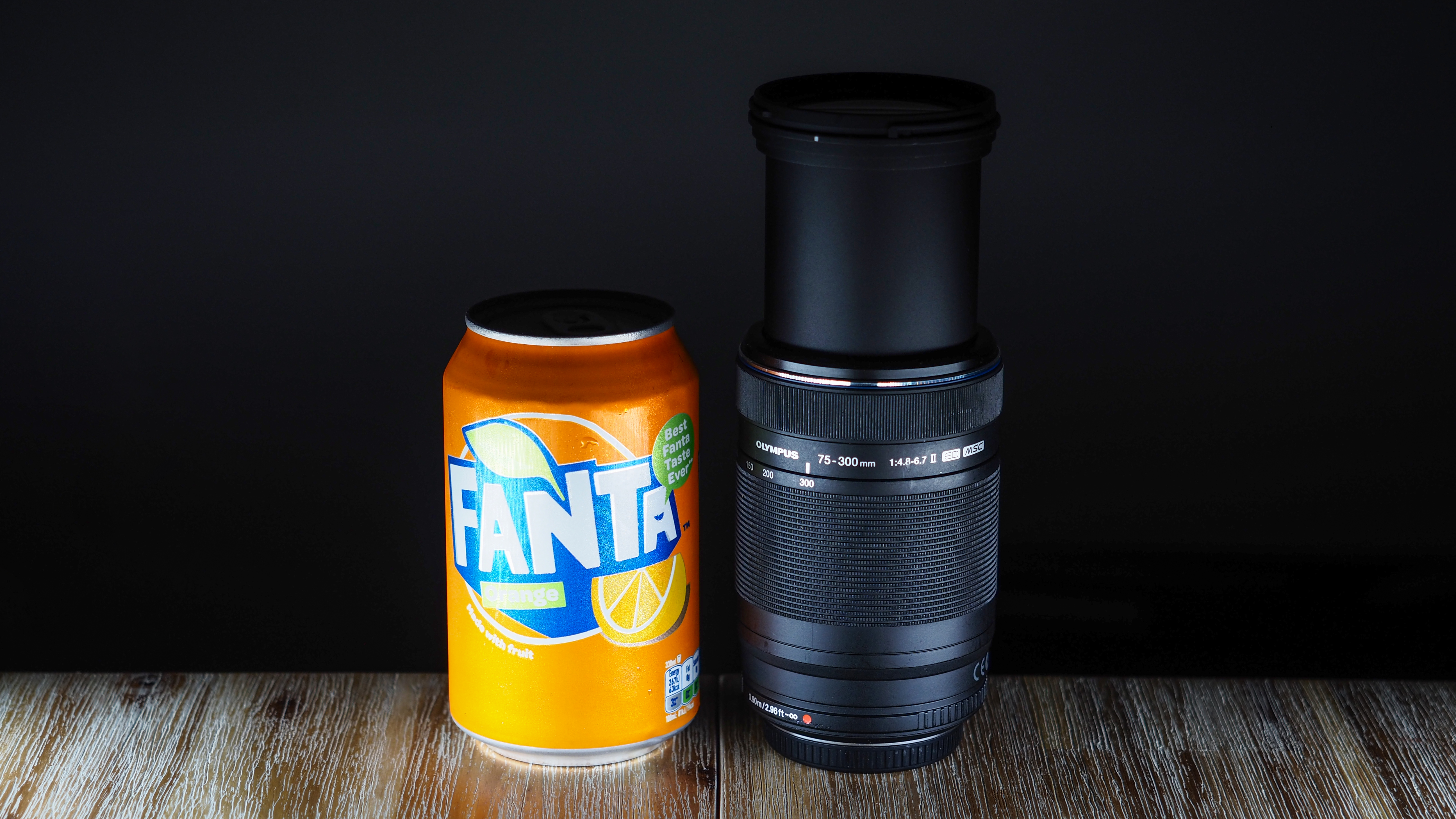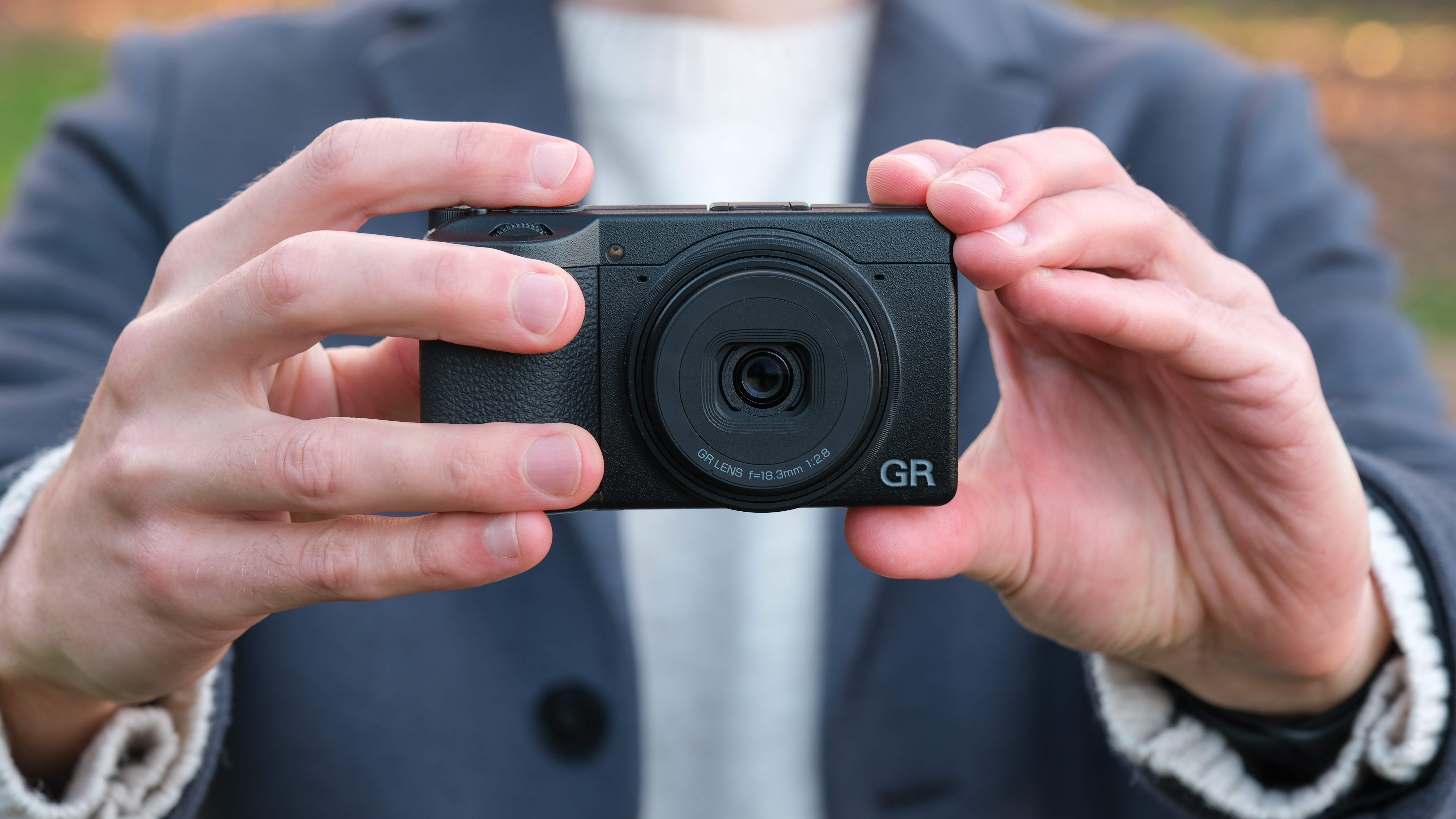Digital Camera World Verdict
The Olympus M.Zuiko 75-300mm f/4.8-6.7 II isn't going to beat pro glass in terms of sharpness, but where else can you get a 150-600mm equivalent that fits in your pocket? Giving super sharp results from the wide to the midway point, and still producing good results at the long end when used with consideration, this is an affordable and capable lens that's ideal for finding your way in wildlife and sports shooting.
Pros
- +
Sharp through most of range
- +
Fast autofocus
- +
Minimal distortion
Cons
- -
Sharpness dulls at 300mm
- -
No lens hood
- -
No image stabilization
Why you can trust Digital Camera World
The Olympus M.Zuiko 75-300mm f/4.8-6.7 II occasionally gets a bad rap – mainly because lots of people slap it on their camera, slide it out to 300mm, take a couple of snaps from the hip and decide that it's too soft.
Well, this lens doesn't just deserve better than that – it is better than that. Like any other super telephoto, the Olympus M.Zuiko 75-300mm f/4.8-6.7 II can't be powered by pure nonchalance; it's a 150-600mm equivalent lens (in full frame terms) and, as such, needs to be used with some consideration to get the best results. Which can be pretty darned good.
Even though it's a budget option, it gives some of the best super telephoto lenses a run for their money – the equivalent Sigma 150-600mm f/5-6.3 Contemporary, for example, is twice the length and nearly five times the weight.
Is it all about size, or does the Olympus M.Zuiko 75-300mm f/4.8-6.7 II do enough to pull up a chair at the best Olympus lenses table?





Olympus M.Zuiko 75-300mm f/4.8-6.7 II: Specifications
Mount: Micro Four Thirds
Focal length: 75-300mm (150-600mm full frame equivalent)
Aperture range: f/4.8 (75mm) / f/6.7 (300mm) - f/22
Angle of view: 16° to 4.1°
Lens structure: 18 elements in 13 groups
Aperture blades: 7
Min. focusing distance: 0.9m (at 75mm) / 1.5m (beyond 75mm)
Max. Magnification: 0.18x (0.36x full frame equivalent)
Autofocus: Yes
Filter thread: 58mm
Dimensions: 69 x 116.5mm
Weight: 423g
Olympus M.Zuiko 75-300mm f/4.8-6.7 II: Key features
The 75-300mm f/4.8-6.7 II replaced the earlier 75-300mm f/4.8-6.7, though the differences are minimal; essentially, the newer lens features a cosmetic overhaul and the addition of Olympus / OM System's ZERO lens coasting (Zuiko Extra-low Reflection Optical, for flare resistance and contrast control).
It's key selling point is obviously its 150-300mm equivalent focal length, which makes it a great optic for wildlife, birding, sports and action – though the sluggish f/4.8-6.7 aperture means that you'll be relying on strong ambient light and / or pushing the ISO to maintain fast shutter speeds. (In other words, this is probably not going to be ideal for indoor photography.)
The best camera deals, reviews, product advice, and unmissable photography news, direct to your inbox!
The price tag is also a big consideration for this lens, retailing for less than $400 / £400 / AU$500, making this a compelling option for birding on a budget or dabbling in sports and wildlife photography without breaking the bank.
Olympus M.Zuiko 75-300mm f/4.8-6.7 II: Build and handling
Despite its all-plastic construction (except the metal lens mount), the 75-300mm doesn't look or feel like a cheap lens. It's sturdily built and feels very solid in the hands, from the firm zoom ring to the precise (albeit focus-by-wire) manual focus ring.
The lens telescopes as it zooms out, gaining a few inches in length and changing the balance. At the same time, the focusing is internal and the filter doesn't rotate, which is good news for those who use filter kits. The mechanism is solid and doesn't suffer from any creep (evidenced by the lack of a lock button on the lens).
That said, since it isn't weather sealed and it features a considerable zoom mechanism, you should be wary about using the lens in inclement weather or you risk moisture and particulates getting in.
It's worth noting that the 75-300mm is large for a Micro Four Thirds lens, and it balances better on chunkier cameras like the OM System OM-1 and Olympus OM-D E-M1X than it does smaller bodies.
Our Olympus OM-D E-M5 Mark III and Olympus PEN-F are just on the cusp of the comfort zone for us; while it's possible to shoot on compact models without viewfinders like the Olympus PEN E-PL10 it's not the ideal shooting setup.
The lack of lens stabilization means that you're going to be relying on your camera's in-body stabilization (IBIS), so again the meatier models will offer better compensation as well as balance.
Olympus M.Zuiko 75-300mm f/4.8-6.7 II: Performance
While this lens, like every non-professional zoom on the market, does not deliver peak performance at the long end, with good technique it is definitely very possible to get sharp results from this lens at the full 600mm equivalent extension.
Certainly you get the most tippy top results from 150-300mm, where the lens performs best in terms of resolution. Obviously, though, nobody buys a 600mm lens because they don't intend to shoot at 600mm – so look at the shot of the squirrel at the top of this page and judge for yourself whether it's sharp enough for you.
The autofocus is swift and snappy, particularly on Olympus bodies with eye and animal tracking – but it also behaves well on contrast-detect systems like the Olympus PEN E-P7.
The AF system is silent and smooth, too, offering excellent performance for shooting video – though of course, given the lack of constant aperture, you'll need to be aware of exposure changes when zooming in and out.
When it comes to stabilization, you'll definitely get the most out of this lens when used on bodies with more robust IBIS, like the Olympus OM-D E-M1 Mark III, along with an electronic viewfinder so that you can steady the camera against your face.
The ZERO coating resists ghosting and flare very well (which is good, as the lens does not come with a hood in the box), making it possible to shoot in strong backlight without losing valuable contrast.
Olympus M.Zuiko 75-300mm f/4.8-6.7 II: Verdict
It's obviously not going to rival the Olympus M.Zuiko 300mm f/4 Pro in terms of sharpness, but the Olympus M.Zuiko 75-300mm f/4.8-6.7 II is still able to produce great results if you know what you're doing with it.
Is it the lens you should take on the safari trip of a lifetime? No, you're still going to want to look to the f/2.8 Pro trinity glass for the serious stuff. However, if you're after the perfect lens to take to the zoo or to cut your teeth in sports photography, this is the one to go for.
Capable of great sharpness up to 150mm, and pleasing sharpness at 300mm with good camera technique, the 75-300mm is a pocketable lens that performs well on just about any Olympus body thanks to its impressive AF and handling. Used within its limits, and with reasonable expectations, this is an affordable and very capable optic that deserves a place in your bag.
Read more:
Best Olympus cameras (OM System)
Best Micro Four Thirds cameras
Best Micro Four Thirds lenses

James has 25 years experience as a journalist, serving as the head of Digital Camera World for 7 of them. He started working in the photography industry in 2014, product testing and shooting ad campaigns for Olympus, as well as clients like Aston Martin Racing, Elinchrom and L'Oréal. An Olympus / OM System, Canon and Hasselblad shooter, he has a wealth of knowledge on cameras of all makes – and he loves instant cameras, too.






